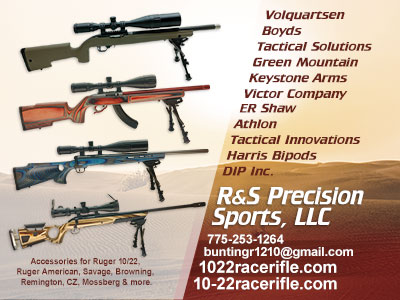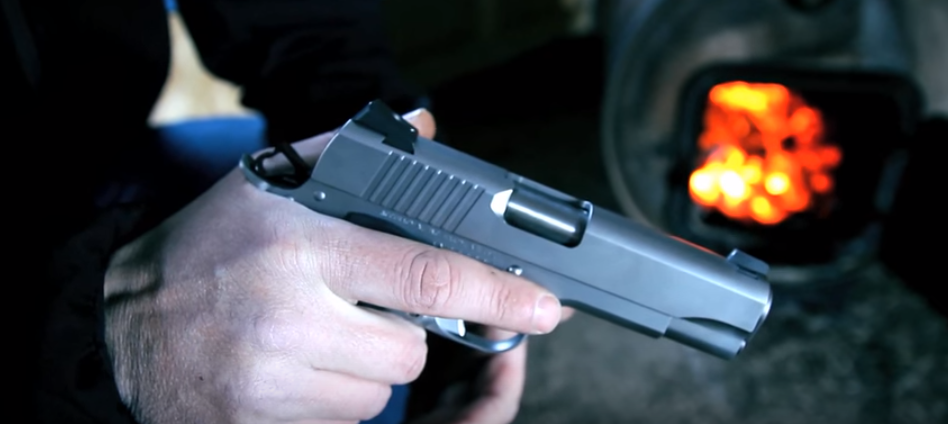
New Smith & Wesson No. 3 ‘Worth the Wait’
It took five years – and maybe a little begging on the author’s part – but Taylor’s and Company now offers their S&W New Model Frontier revolver in .44 Special, along with .45 Colt.
Here’s the review.
STORY AND PHOTOS BY MIKE NESBITTFive years ago, in the August 2015 issue, this column featured the New Model No. 3 Frontier revolver from Taylor’s & Company in .45 Colt caliber. At that time the .45 was the only caliber offered and my story was concluded with – I’ll admit – some rather straight-forward begging for this revolver to be available in .44 Russian or .44-40 caliber, and the .44 Special. I’m not trying to say that my story or my little bit of begging had any influence on Taylor’s, but I am very pleased to say that the .44 Special versions of this fine revolver are here. And it was worth the wait!
DEAD FOOT ARMS

In profile, this .44 Special doesn’t look any different than the very same model in .45 caliber. At this time, however, the .45 is available with both 5-inch and 6½-inch barrels, while the .44 is offered only with the 6½-inch barrel. We’ll have to see if the .44-caliber guns are welcomed enough by buyers to add the shorter barrel to their available list in the time to come. Frankly, I’d like to see that, although the longer 6½-inch barrel will still remain the choice.

This made their revolver acceptable for the popular .44-40 Winchester cartridge and, like Colt, they called this gun in .44-40 their Frontier version.

The S&Ws in .44-40 did not prove to be popular and several of those .44-40 single-actions were converted back to .44 Russian caliber. The New Model No. 3 was discontinued by S&W in 1908. Just before that, the .44 Special cartridge was introduced in 1906 and it was the very last of the American cartridges to be designed for use with black powder. As introduced, the .44 Special was loaded with a 246-grain bullet over 26 grains of black powder, but it was also available with smokeless powder loads.
We might point out how the .44 Special was introduced just in time to be included in the chamberings for the New Model No. 3, and a few of them did leave the S&W factory made to shoot their new .44 cartridge.
One of the best options available on the old New Model No. 3 revolvers was target sights. Instead of the tiny and hard-to-see rear sight on the pivot point of the gun’s top latch, the target versions had a very nice rear sight on the end of the top latch just over the hammer. Moving the sight further back, or to the rear of the top latch, increased the sighting radius by over 1/2 inch and it also gave the shooter a very nice flat-topped rear sight with a wide and deep notch.
The rear sight on the target versions is adjustable for windage by loosening the screws that hold the sight in its slot and sliding the sight to the right or left, quickly and easily done. The new Taylor’s version copies the target model and that easyto-see rear sight can be appreciated all over again.
In fact, I appreciate those nice sights more now than I did when I shot the .45-caliber version of this gun. That’s because my eyes are at least five years older now, but they are acting a lot older than that. I’ll say more about the eyes as we continue, but for now let me talk more about the gun and the shooting done with it.


Moving the group was easy enough to do; just move the rear sight in the same direction that you want the bullets’ impact to be moved. There is no “click” adjustment to the gun’s rear sight; simply loosen the two set screws that hold it and slide it right or left, to the right in this case. So, the sight was moved a “guesstimated” amount and tightened again.
The rear sight was moved while back at home, when the gun was being cleaned. Shooting black powder in a revolver does get the gun dirty and the moving parts need to be lubricated. To effectively lube this sixgun, remove the cylinder and put some good grease on the base pin that the cylinder revolves around.
There are some grease-holding threads on that part; make sure it is covered with all of the grease it will hold. The grease I use is Bumblin Bear Grease from October Country and I do prefer a natural oil or grease rather than a petroleum. Without being well greased, a revolver shooting black powder loads, either cartridge or cap and ball, will simply bind up and become inoperable.


That’s when I tried five shots in the new gun using modern .44 Colt loads with the 220-grain .429-inch bullets over 21 grains of Olde Eynsford 2F powder in the Star Line cases. Wow! Those five shots were fired while resting the gun on the bench, with the target still at 50 feet, and all shots printed very tightly just below the X-ring. They hit right where the sights were being held.
Next I tried some .44 Russian loads again, using the 250-grain round-nosed bullets over 18 grains of the Olde Eynsford 2F black powder. Those five shots were fired offhand, with a two-hand hold, while aiming with my left eye. Wow, again! The target’s scoring rings are just large enough to be slightly generous and I did get one bullet somewhat to the right but still a 10. The score of those five shots adds up to a 50-4X.
More shooting has been done since that initial target and now the ammo is reloaded to do even more. This .44 Special revolver is everything I had hoped it would be and soon I’ll be using it in competition during the Pistol Match at our Buffalo Camp. I’m looking forward to doing that shooting and perhaps a good report will follow For more information on this gun, go to taylorsfirearms.com and look in their “Top Break Revolvers” section.
Taylor’s suggested retail price for the .44 Special is $1,170. I got my gun through C. Sharps Arms Co. and they’d be glad to order one for you. Contact C. Sharps Arms at info@csharpsarms.com or call them at (406) 932-4353. Getting this .44 Special in the No. 3 Frontier revolver is really something special. Like I said, it was worth the wait!





